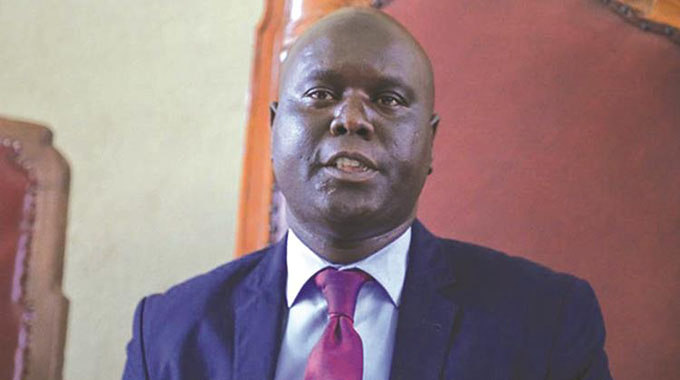First-hand experience of Pfumvudza concept

Isdore Guvamombe Assistant Editor
Sometime in October last year, I bumped into the Pfumvudza farming concept on social media and got excited.
It was a video clip that immediately captured my imagination. I played it again and again until I was satisfied that got everything right.
I immediately sought to experiment at my parents’ village home in Guruve.
My father and mother are both late, having departed from mother earth more than a decade ago, and they left a village home where only my younger sister Isdollah now stays.
Never mind the names Isdore and Isdollah, Innocencia, Illuminator etc, that is subject for another narrative. The rest of my siblings are doing their own thing locally and abroad and Isdollah is the vanguard of the home.
It was, therefore, critical to get her buy-in on the Pfumvudza project.
I explained to her, as a very hard person to please and a master of questioning and scepticism on anything, the Pfumvudza concept and what I wanted to achieve.
She agreed grudgingly, I am her eldest brother and have a first born-tag that I use to leverage on many matters.
She took a back seat as I engaged some village boys to dig the planting stations. Soon there were 28 planting cups in a line that translated into a bucket of maize if each stations got two plants, itself enough to feed an average family per week.
With the year having 52 weeks it meant multiplying the line by the number of weeks in a year.
This villager is no good mathematician, but I got that the space consumed by the project was a mere 1/16th of a hectare. Very, very, very small.
I vividly recall my sister standing by the field asking me if it worked and even teasing me that I was sliding back to ancient times.
I have a tractor at my farm which is less than 10km away which I normally use to plough for her.
She wondered why I was bothered by what she termed primitive farming.
But I insisted on working on the planting stations the Pfumvudza way until I was satisfied we were ready for the rains.
Back at work, the leadership had changed and William Chikoto became interim editor. He allowed me to explain the concept before a full news diary conference and there was disbelief among colleagues. Chikoto saw it a very good solution to our agricultural matrix among smallholder farmers.
We were trying to shape the summer cropping season narrative, but I was alone in that and it had no many takers among my colleagues. Surprisingly, there was worry about the rainy season starting late.
Indeed, the rains came late in the village last year and there was a lot of hullabaloo.
It is shocking how smallholder farmers are usually disorganised at the onset of rains.
The beginning of the farming season in the village brings a lot of activity and legendary confusion. For some reason, the oxen are not found on time, the plough shear is not in place.
The spanners are not the right size. The chains, the yokes and the other necessities are not in place. A lot of time amounting to days or even a week are lost in putting little everything else in order.
As confusion reigned in the village I called Isdollah to simply say, “Plant my sister.” Indeed, she planted.
While the majority of the villagers spent hours on end putting their house in order, my sister had already planted. About eight days later when I went to the village, germination had already started and the crop looked good.
Meanwhile, the rest of the village was clutching at this and that. A few organised villagers had just planted. We were ahead of everyone else.
Then there was a lengthy dry spell that forced villagers to cast their eyes on the sky looking for signal of rains and on the ground looking for germination. We managed with a 100-litre tank and used cups, watering twice a week.
Our crop thrived where the rest showed moisture stress. The village was agog with the news of our madness, but soon many people started seeing results. Each day my sister started receiving visitors to see the maize crop.
Again the rainy season ended abruptly, leaving most of the maize in the village at tasseling stage when they needed the rains most.
Isdollah now owned the maize. She systematically elbowed me out of the project and claimed its success.
Many people did not harvest well last season. The rains just disappeared when they were needed most.
This year when the Government embarked on the Pfumvudza project and went into overdrive, my sister had already done her planting stations. I was really surprised that the person who thought it was backward, has seen the light and is now a torch-bearer. She is enjoying the fruits of the adventure. She is now a proud ambassador of the project. She is telling everyone who cares to listen that Pfumvudza is the way to go.
By embarking on a nationwide Pfumvudza project, the Government has done extremely well to ensure food security at household level and indeed it makes it easy to achieve national food security.
The good thing about Pfumvudza is that it is intensive and high-yield farming on a very small space and it gives the farmer options for other crops.
Pfumvudza makes the farmer capitalise on time at the onset of the rainy season and instead of running around looking for oxen, yokes and ploughs, the farmer simply plants.
Land preparations will have been done prior to the rainy season and all the farmer does is plant and manage the crop.
Gone are the days when communal farmers planted on huge swathes of land with limited resources. The result is that the yield does not correspondent with the piece of land planted. It is a waste of time.








Comments